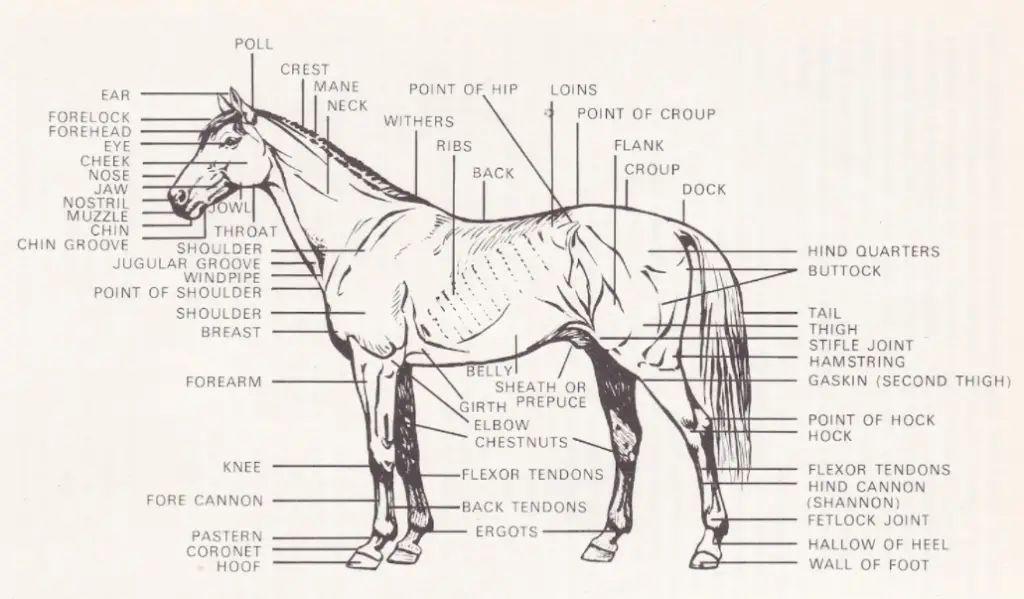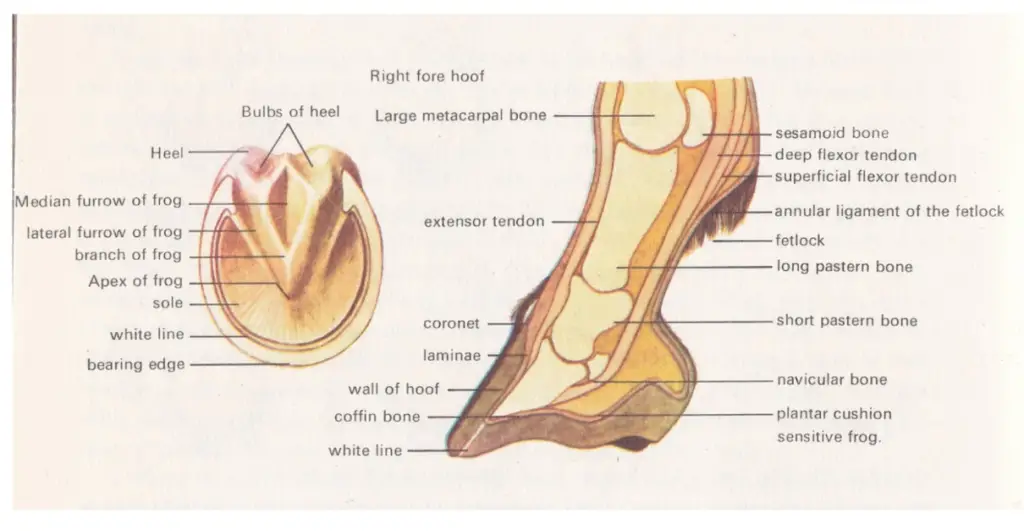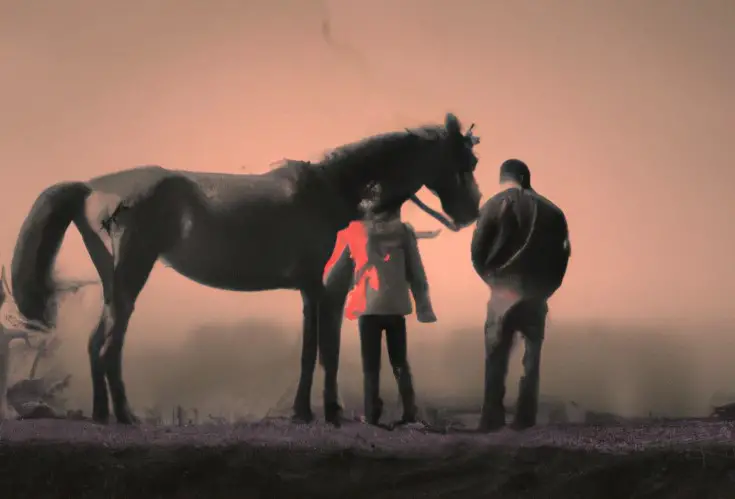This article on how to buy a horse was written and intended for amateur enthusiast who wants a riding horse or pony.
It does not include suggestions for those who want, for example, to build up a stud or watch their horses win on the racetrack, since such people, if not already experts themselves, will be employing specialist advice.

Table of Contents (Horspedia)
How to Buy a Horse? (properly)
Buying a good horse can be easy. Go to the biggest horse shows in the country and buy a horse that wins consistently. It may cost far more than it can ever make in prize money, and in all probability, it will depreciate at a speed that even the rashest investor would not entertain.
However, for the not-so-rich amateur who wants a reasonable animal at a fair price, it’s a little more complicated.
Horses are relatively difficult to assess both in price and suitability. Unlike a used car a horse has no fixed value, so the price depends upon the eagerness of the buyer and current market competition.
Fashions in some types of horse children’s ponies are an excellent example that can be as wayward and changeable as fashions in clothes (and frequently much less meaningful). So if everyone is after a palomino, for instance, it may be possible to buy the same number at half the cost.

More obviously, colts and mares suitable for stud are likely to have a higher price tag than geldings.

Though it by no means follows that an unfashionable color or gender is necessarily a bargain when deciding on how to buy a horse, it is often worth enquiring about because if the buyer does not save money he at least learns more about the breed he wants.
How to Select a Horse to Buy (4-Step Guide)
The suitability of a horse depends upon the proficiency of the rider, on the age, size, strength, and ability of the horse, and on its health and character (not to mention the rider’s).

How to buy a horse suited to a rider is best done abstractly before any specific horse is considered for purchase.
- The horse needs to be big and strong enough to carry the rider comfortably, but not too big and strong for the rider to control.
- It should be capable of living under conditions that its owner can easily provide that is, there is no point, if the rider lives in a cold climate, in buying a thin-skinned Thoroughbred if he cannot afford stabling, blankets, oats, and two or three hours a day of care and exercise.
- The horse must be sound for the purposes for which it will be used. A horse that is unsound in wind, for example, might run out of breath during a fox hunt but could be perfectly fine for hacking
- Since so much time has to be spent with a horse it is important that the owner should like the animal. Taking a liking to a particular horse is immediate and as positive as a reaction to a new face at a party.
Expect no similar reaction from the horse, since his initial response is invariably one of indifference until he has had a few weeks’ experiences of a new owner, but the undercurrent of sympathy and trust which to many is the most pleasant part of owning a horse cannot evolve unless at least one side of the partnership is predisposed towards it.
Questions to ask before Buying a Horse
How to buy a horse comes with a lot of research and questions. Here are a few preliminary questions to ask yourself before buying a horse.
- What do you want to use it for?
- Where will you keep it?
- Will restrictions of stabling, grazing, or budget eliminate types of horses you might otherwise consider buying?
- Do you have enough time to look after it (estimate two hours a day, more for stable-kept horses)?
- Alternatively, can you get someone to look after it for you?
- Who will look after it when you are away from home?
- Is the area you live in really suitable for riding?
- Do local conditions (rough terrain, heavy traffic) in any way define the type of horse you should have?
- Are there enough diverse places to ride to keep you happy for 365 days of the year?
- Are you fond enough of riding to spend the necessary time with your horse in the foulest weather of the year?
- What is the maximum you are willing to pay? (It is never a good idea to economize on the purchase price, as a cheaper animal with a flaw in temperament or physique will in the long run cost much more than the saving on the purchase price.)
Answers to questions such as these help to define the horse required, and indeed to define whether a horse is required at all. If what is the ideal horse is understood in advance then the risk of buying a charming but unsuitable animal is much cut down when deciding how to buy a horse for yourself.

The temptation to buy a beautiful horse is enormous when the animal is right before your eyes. Only by knowing precisely what you want to get from your first horse, and being patient until the right horse comes up for sale is how you can get your perfect horse.
What to Look for When Buying a Horse?
A horse is an athlete and should look like one. So here are a few points to look for in a riding horse or pony and deciding to buy your first horse:
Horse’s Head:
Alert and proudly held, not over-large. A riding animal with a heavy head will be heavy on the reins.

Eyes of the Horse:
Large and intelligent. Kind horses have kindly eyes. Piggy’s little eyes reveal piggy’s little nature.
Stick a finger almost into each eye to see if it blinks. If it doesn’t, it is blind. Potentially a horse can suffer from as many vision deficiencies as a human, and bad sight can make it shy at phantoms for which its rider will not be prepared.
Horse Withers:
Prominent, and back not too fast – otherwise the saddle will slip forwards or sideways.
Legs of a Horse:
Smooth and cool to the touch. A horse whose legs are scarred and bumpy, if not actually unsound, will certainly be careless. Have it trotted towards you and away.
If its feet swing out sideways, or alternatively if it almost crosses them over, avoids it. Don’t buy it if it shuffles.
Pasterns:
Strong and springy. If nearly vertical (“upright”) they will get jarred trotting on roads.
Horse Feet:
Round and neat. If they are splayed, uneven, split, or cracked especially if cracked from the top of the hoof down-don’t buy it.

Horse Wind:
Unsoundness such as roaring or whistling is particularly difficult to detect. Easier to hear if you can get someone to gallop the horse past you. Everyone will hear it when you have it in the hunting field.
Coughing Horse:
If the horse coughs, even once, don’t buy it. It may well be only a bit of dust in its throat, but it could also be a sign of serious illness.
Unless the horse is to be stabled all the time, ask to see it caught (animals that are hard to catch become a daily nightmare).
Trot and Walk:
Have it walked and trotted past you, towards you and away from you, to see if it carries itself well, has a nice springy stride, and if its action is straight.
Saddle it up yourself to see if it is well-behaved. Mount it and walk, trot and canter it. Put it over a small jump. Test it in traffic (safer to lead it, in case it fails).
If you like it and take it home, allow time for it to settle down. Moving is traumatic for a horse. Until it knows you and comes to meet you, leave a headcollar on it in the field with 12in of rope attached to catch it by.
How to find the Right Horse to Buy?
Naturally enough, a good, experienced horse is nearly always expensive, though some savings can be made if it is bought at the least useful time of year.
Thus bargains in show horses mainly happen at the end of the showing season.
Types of Horses to Buy
A cheap hunter horse:
A cheap hunter is easiest to find when hunting finishes and hunt stables and private owners sell off horses they do not want to keep through the summer.
Thoroughbred horse:
Thoroughbreds can sometimes be had quite cheaply at racehorse sales when racing stables throw out their disappointing runners, but unless the buyer has inside knowledge such horses may well turn out to be unsound.
Also, the purchaser must anyway provide expert care and handling if the horse is to be transformed into a good riding animal.
Horses for children
For children, who are often capable of enthusiastic neglect, the wisest buys are native ponies or cross-breed, since these are naturally adapted to the climate and will live outdoors quite happily all year if given a shelter of some kind, and of course additional feed when the grass dies down in winter.
Getting a pony
A pony for a child should be sensible and kind. Ponies aged between seven and ten are the most1 in demand because they are old enough to be steady but have not yet begun to show signs of wear.
However, much older ponies should not be rejected solely on the grounds of age. Provided it’s healthy and up to work, an experienced old pony is an excellent teacher.
Important! Things to Take Note of When Buying a Horse
- Buying your favourite animal from the local riding stable can be a mistake because you know it only as a hard-working member of a herd (horses behave better in the company). By itself and lightly worked it may be a brute.
- Advertisements can also be a let-down, since it may mean travelling miles only to find that what the advertiser thinks is beauty is, in your opinion, a wretch.
- Horse sales, for the casual buyer with no inside connections, are best avoided altogether because there is no opportunity to try the animal out.
- The safest way to buy a horse is to get one you know and like from a friend. Failing that, a reputable dealer (one who’s been in business for some time in the same locality) is always willing to find you a suitable horse if he knows what you want and how much you are prepared to pay.
- Try it out, and buy it “subject to veterinary examination” so that if your veterinary surgeon objects to it you can send it back.
- Always choose the vet yourself, making sure that he is one who specializes in horses.
Conclusion
Perhaps the best way of all to get a horse is to brief an expert to buy one for you. How to buy a horse is a challenging task.
This method of purchase has two big advantages; there is a better-than-average chance of getting a suitable animal, and if the horse turns out to be no good then someone else is to blame.

